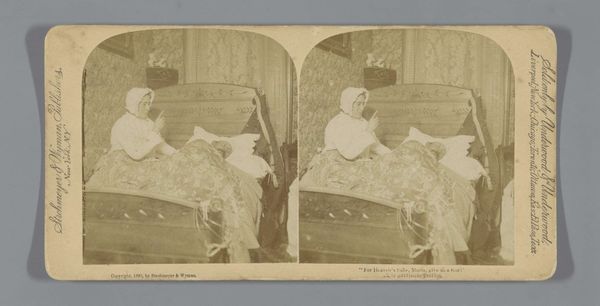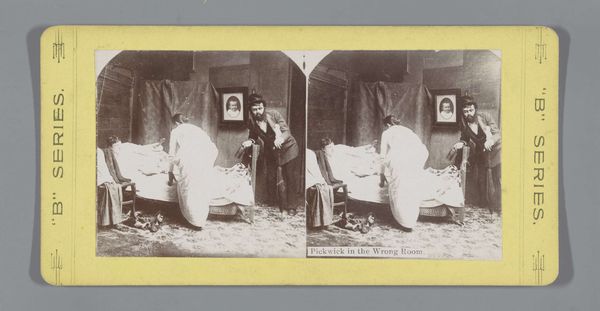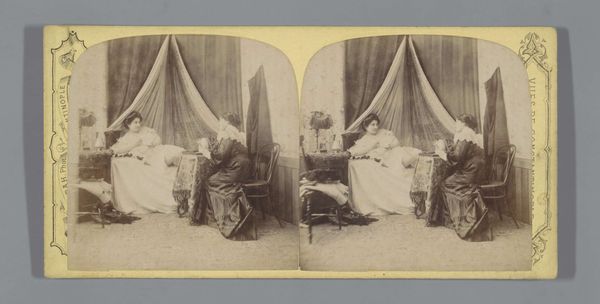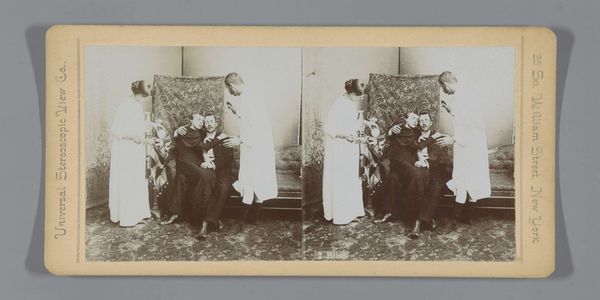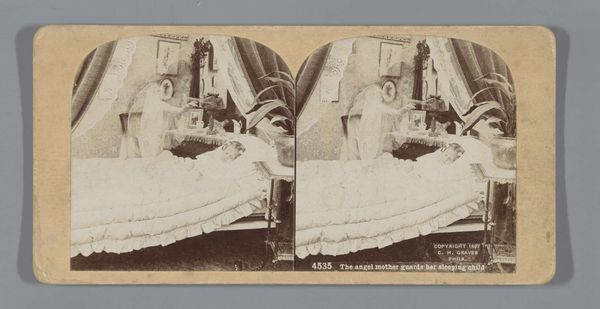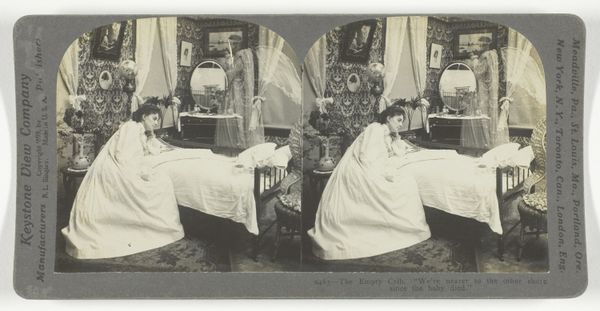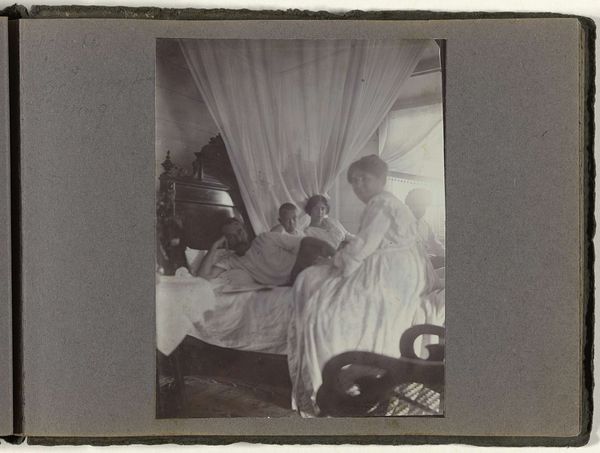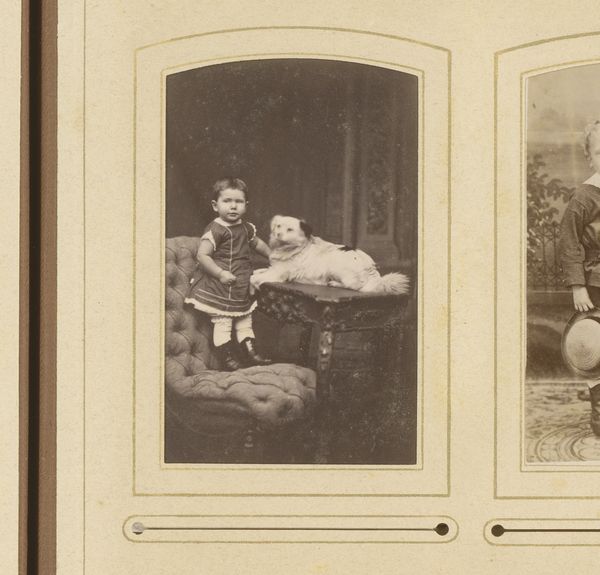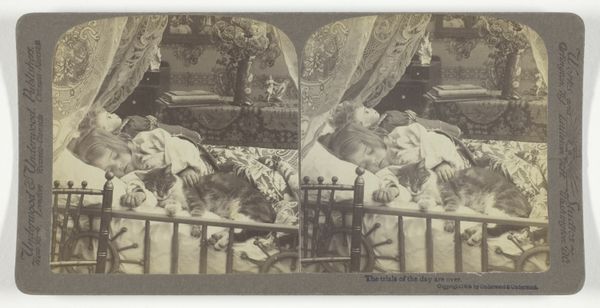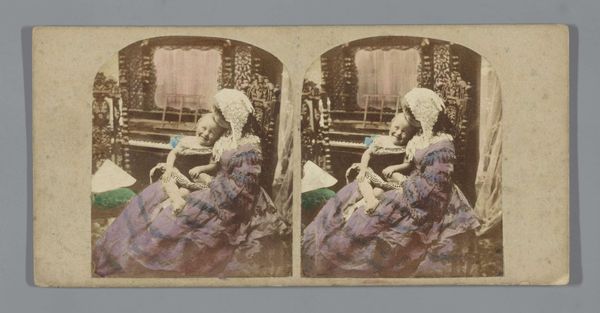
photography
#
portrait
#
photography
#
genre-painting
#
realism
Dimensions: height 86 cm, width 177 mm
Copyright: Rijks Museum: Open Domain
Curator: This stereoscopic image, produced between 1890 and 1910 by the Universal Stereoscopic View Company, depicts an “Echtpaar in bed” – A Couple in Bed. What do you notice first? Editor: The starkness. There's a performative intimacy happening here, it doesn’t read as vulnerability. What power dynamics do you observe within this staged, Realist scene? Curator: The man seems to be the focal point. He's sitting up in bed, seemingly enjoying a nip of something, which explains the handwritten "A Nip on the Side" label printed on the photo. It presents as a rather ordinary, private scene, but the ritual itself— the glass, the moment alone—speaks to a very familiar kind of solace. Editor: Indeed, but note the positioning. The man occupies the visual foreground, propped up and active, while the woman is relegated to the background, partially obscured, seemingly asleep. How does this reflect the societal norms regarding gender roles? Is her "invisibility" reinforcing specific stereotypes? Curator: The details surrounding her could hint at that invisibility— a shawl or blanket casually tossed onto a chair seems to visually echo her state. Also the symmetry with the man and the framed portrait hanging behind his head on the wall adds a layer of complexity: does the portrait, or what we assume to be a portrait of a man, reinforce that gendered importance? Editor: Perhaps the staged "naturalism" and banal moment they chose, forces us to look at this private scene as a means of solidifying public notions of domesticity and leisure. Consider also who held the power to document such moments; how much of their experience made it into visual record? Curator: It really becomes a question of whose narrative this photograph serves. It captures an ostensibly quotidian moment but also perhaps reveals deeper societal power structures, which speaks to realism as a powerful movement—in which an intimate peek in one place becomes a view into the whole social tapestry. Editor: Absolutely, it also brings into question that simple concept of portraiture and memory keeping: the figures are made to represent far more than just themselves within a singular historical point. It makes me question the image as truth-teller or just document, don't you think? Curator: I couldn't agree more. What starts as a deceptively simple image blossoms into an investigation of gender, power, and the very nature of representation. Editor: Indeed. The layers within its historical moment make this small photograph surprisingly vital, even today.
Comments
No comments
Be the first to comment and join the conversation on the ultimate creative platform.
